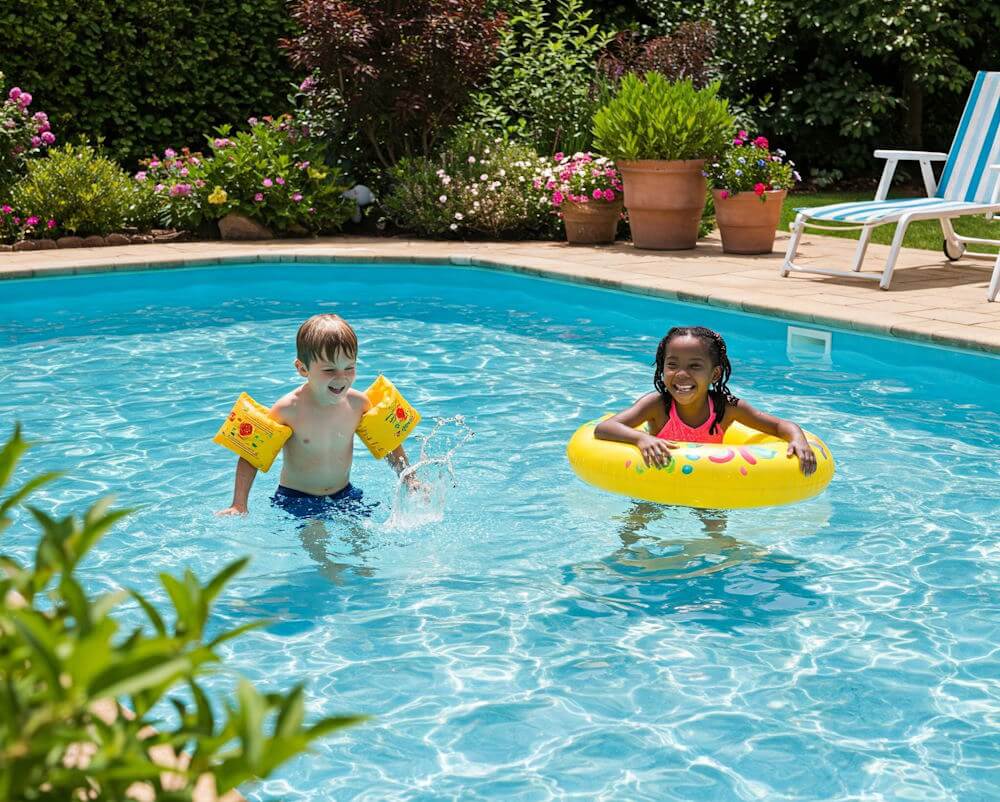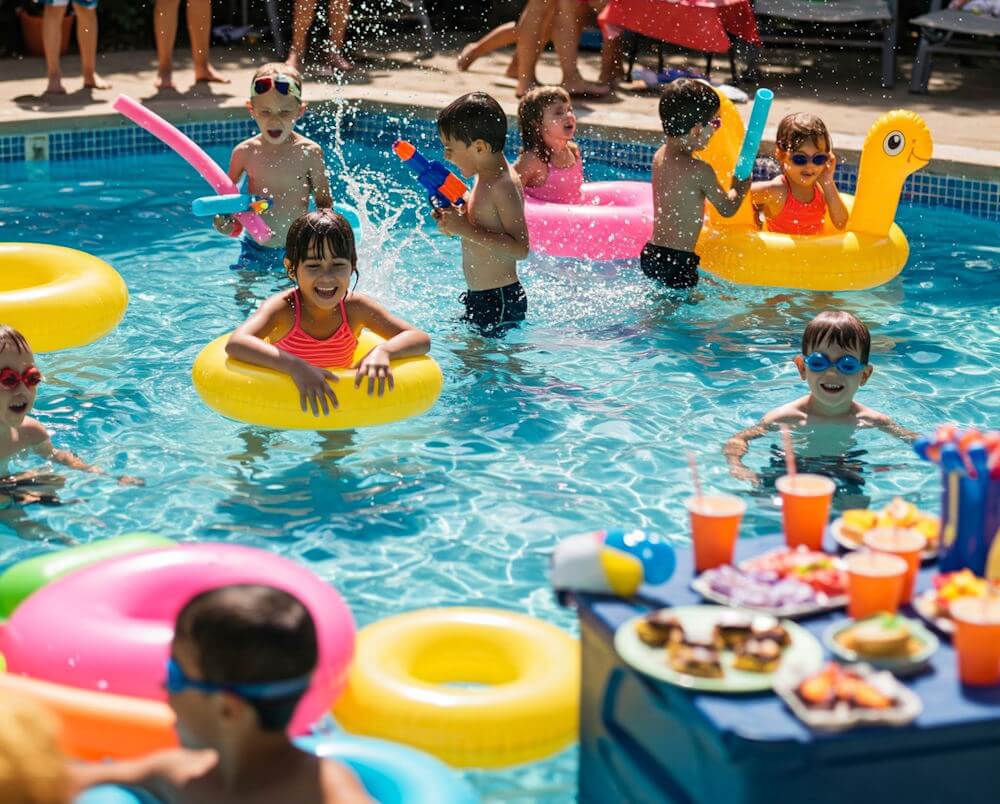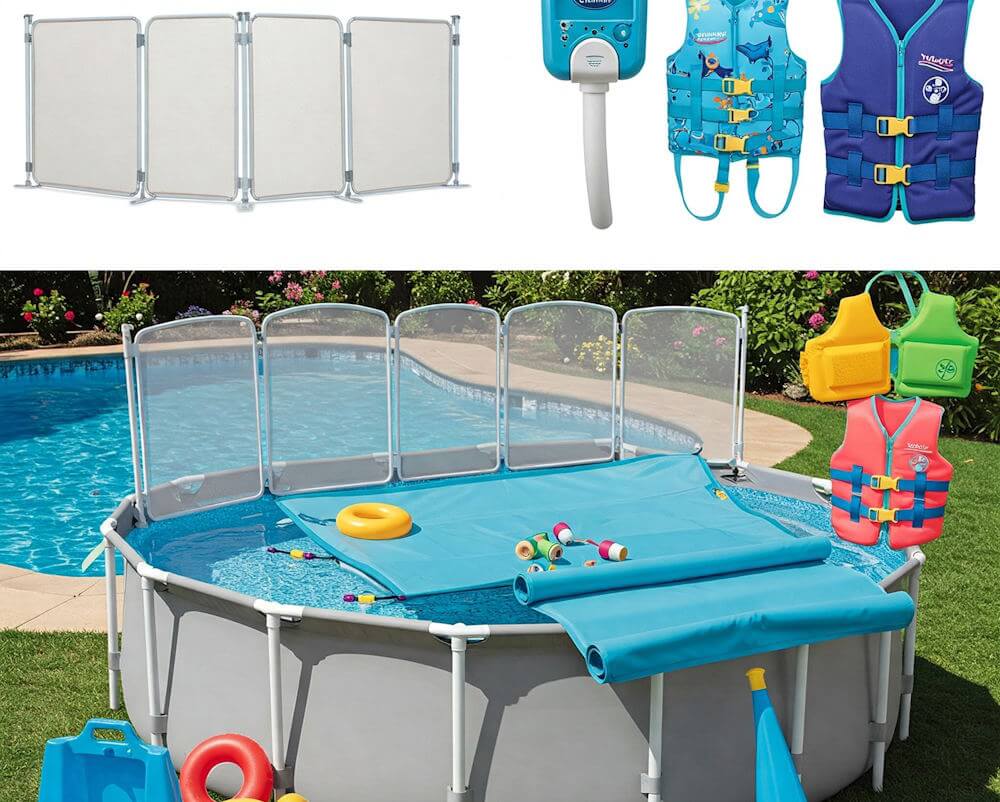Why Pool Cleanliness Matters
Maintaining a clean pool environment is essential for the health and safety of children who enjoy recreational swimming. A well-kept pool serves not only as a source of joy but also as a safeguard against various risks associated with poor hygiene. Dirty pools can harbor harmful bacteria and viruses that may cause waterborne illnesses such as gastrointestinal issues, skin infections, and respiratory problems. For parents, it is crucial to recognize the potential hazards that stagnant or contaminated water presents to their children.
In addition to health concerns, a dirty pool can pose physical safety risks. Accumulated debris, algae, or chemicals can create slippery surfaces around the pool area, increasing the likelihood of slips and falls. Children are often energetic and unaware of their surroundings, making it imperative for parents to ensure a safe swimming environment. Regularly cleaning and maintaining the pool mitigates these hazards, allowing children to engage in carefree water play.
Moreover, a clean pool encourages more frequent use. Parents often find that children are more excited and willing to spend time in a well-maintained swimming pool. When the water is clear and inviting, it fosters a positive atmosphere for family gatherings, playdates, and exercise. Conversely, a neglected pool can deter children from swimming activities, limiting their opportunities for enjoyment and exercise. The presence of a clean pool not only promotes health and safety but also enhances the overall experience for kids, encouraging their development through physical activity in a fun environment.
In summary, ensuring that a pool remains clean and hygienic is not simply a matter of aesthetics—it is vital for protecting children’s health and enhancing their enjoyment of water activities. By prioritizing pool cleanliness, parents can create a safe and engaging aquatic environment that allows children to thrive.
Understanding Common Pool Contaminants
Maintaining a clean and safe swimming pool is crucial for the health and well-being of your children. Various contaminants can compromise water quality, making it essential for parents to be aware of these potential pollutants. Common contaminants in swimming pools include dirt, algae, bacteria, and organic debris, all of which pose risks if not managed properly.
Dirt typically enters the pool through bathing suits, the feet of swimmers, or natural elements such as wind and rainfall. A small amount of dirt can cloud the water and encourages algae growth, necessitating more extensive cleaning efforts. Algae, particularly green algae, thrive in warm and stagnant water, and their presence is not only unsightly, but it can also lead to slippery surfaces that may increase the risk of falls and accidents.
Bacteria, including E. coli, can originate from human and animal waste. Untreated or poorly maintained pools can become breeding grounds for harmful bacteria, putting your children’s health at risk. These microorganisms can lead to gastrointestinal issues, skin infections, and respiratory problems. Therefore, regular testing and adequate chlorination of pool water are vital for eliminating bacteria and maintaining hygienic conditions.
Organic debris, such as leaves and insects, also contributes to pool contamination. When left unaddressed, this debris decomposes, providing nutrients for algae and making it easier for bacteria to proliferate. Parents should regularly skim the surface of the pool to remove such debris and implement a routine cleaning schedule to prevent accumulation.
Being aware of these common pool contaminants and understanding how they can affect water quality is key to effectively managing pool hygiene. By taking proactive measures, parents can significantly reduce the risks associated with swimming in contaminated water, ensuring a safe environment for their children and family to enjoy.
Routine Maintenance Tips for a Pristine Pool
Maintaining a clean and sanitary pool is essential for ensuring a safe and enjoyable swimming environment for children. One of the primary routines every pool owner should implement involves skimming the surface for debris on a daily basis. This simple action prevents debris from sinking to the bottom or decomposing in the water, which can lead to more significant cleaning challenges and murky water conditions. Equip yourself with a skimmer net and walk around the perimeter, focusing on areas where leaves and insects are likely to accumulate.
In addition to surface skimming, vacuuming the pool’s bottom remains a crucial task that should be conducted weekly. By using a manual or automatic pool vacuum, parents can effectively remove dirt, sand, and other particles that have settled on the bottom. This work not only aids in maintaining the visual appeal of the pool but also contributes to the overall hygiene of the water, reducing the risk of bacterial growth and pool-related illnesses.
Another key aspect of routine pool maintenance is managing water levels. Regularly check the water level and ensure it remains at an appropriate height; ideally, it should be midway up the skimmer opening. Low water levels can expose the pool pump and filter to air, which may result in damage and inefficient operation. Furthermore, maintaining balanced chemical levels requires vigilant monitoring. Test the water every week, adjusting pH, chlorine, and alkalinity as necessary to ensure optimal conditions. This proactive approach not only keeps the water safe for children but also prolongs the life of pool equipment. Implementing these routine maintenance tasks will contribute significantly to a clean and germ-free swimming experience.
Choosing the Right Pool Cleaning Equipment
Maintaining a clean and germ-free pool for children requires appropriate cleaning equipment tailored to your pool’s specifications. Parents must evaluate the different tools available, including skimmers, vacuums, filters, and chemical testing kits, to select the most effective options for their needs. Each cleaning tool serves a unique function, contributing to the overall hygiene and safety of the swimming environment.
Skimmers are fundamental in removing debris such as leaves, insects, and dirt from the water’s surface. By selecting a skimmer with a fine mesh net, parents can ensure that even the smallest particles are captured, preventing them from sinking to the pool bottom. With regular skimming, the water remains clear, providing a safe swimming experience for children. Additionally, skimmers can easily adhere to pool walls, making the cleaning process efficient.
Vacuum systems are another crucial component of pool maintenance, particularly for cleaning the pool floor and walls, where dirt tends to accumulate. There are various types of vacuums available, including manual, robotic, and automatic versions. Robotic vacuums offer the convenience of automated cleaning, while manual options afford more control to users still learning about pool dynamics. Parents should consider the shape and size of their pool when choosing a vacuum to ensure compatibility and efficiency.
Filters, which serve as the heart of the pool’s circulation system, play a vital role in maintaining crystal-clear water by trapping impurities. Sand, cartridge, and diatomaceous earth filters each have distinct advantages, and parents should weigh these options based on their pool’s volume, usage frequency, and available maintenance time. Regularly replacing or cleaning the filter is essential for optimal performance.
Lastly, chemical testing kits are indispensable for ensuring that pool water is safe for children. These kits enable parents to monitor pH levels, chlorine content, and other essential water parameters, allowing timely adjustments to maintain a healthy swimming environment. By investing in quality cleaning equipment, parents can instill a proactive approach to pool maintenance, ensuring safety and cleanliness in their children’s swimming activities.
Water Testing and Chemical Balancing
Maintaining a safe and clean swimming environment for children necessitates regular water testing and chemical balancing in pools. The water quality significantly impacts not only the enjoyment of the pool but also the health of its users. Key factors to monitor include pH levels, chlorine content, alkalinity, and stabilizer levels. Each of these elements plays a crucial role in ensuring safe swimming conditions.
pH levels measure the acidity or alkalinity of the water and should ideally be kept between 7.2 and 7.8. If the pH level is too low, it can lead to skin irritation and corrosion of pool equipment. Conversely, excessively high pH can diminish the effectiveness of chlorine, making it essential to test and adjust this level regularly.
Chlorine is a key component in pool sanitation, serving to eliminate harmful bacteria and other pathogens. The ideal chlorine level is typically between 1.0 and 3.0 parts per million (ppm). Regularly testing for chlorine levels ensures that the pool remains free of harmful microorganisms, promoting a safer swimming experience for children and adults alike. In addition, total alkalinity helps stabilize pH levels, and should range from 80 to 120 ppm.
Lastly, stabilizer levels, primarily represented by cyanuric acid, protect chlorine from being broken down by sunlight. An optimal range for stabilizer levels is between 30 to 50 ppm. Testing kits are accessible and user-friendly, allowing parents to conduct safe assessments of their pool water. When imbalances are detected, adjustments can be made using appropriate pool chemicals, which are readily available at pool supply stores. By maintaining proper chemical balances, parents can safeguard their children’s health and enhance their swimming experience.
Incorporating Safe Swimming Practices
Ensuring that children practice safe swimming habits is fundamental not just for their safety, but also for maintaining a clean and germ-free pool environment. One of the primary measures is showering before swimming. Encouraging children to rinse off in the shower prior to entering the pool helps to remove dirt, oils, and other contaminants from their bodies. This simple act significantly contributes to keeping the pool water cleaner for all swimmers and reduces the burden on filtration systems.
Additionally, it is crucial that children utilize the restroom facilities prior to their swim. Accidents can happen, and any fecal contamination can pose health risks not only to the affected swimmer but to others in the pool. Parents should also ensure that children understand the importance of not bringing food or drinks into the pool area, as spills can attract pests and lead to further contamination.
Moreover, adult supervision plays a vital role in maintaining a safe swimming environment. Active supervision allows for quicker responses to any incidents, such as accidents or falls, thereby ensuring children are safe while enjoying their time in the water. Educating adults on how to recognize potential dangers, including disruptive behavior or fatigue, can help prevent accidents and ensure that the swimming area remains secure.
Incorporating these safe swimming practices not only protects the children but also significantly reduces the likelihood of waterborne illnesses. Regular reminders about these practices can help make them an integral part of the swimming routine, fostering an environment where safety and cleanliness are prioritized. Overall, instilling these habits from a young age can cultivate a lifelong respect for pool safety and hygiene, ensuring enjoyable swimming experiences for the entire family.
Using Natural Cleaning Alternatives
Maintaining a clean and safe swimming pool for children is a priority for every responsible parent. With growing concerns about chemical exposure and environmental impact, opting for natural cleaning alternatives offers an effective solution for pool maintenance. Several household items can serve as eco-friendly cleaning agents, ensuring a germ-free swimming experience without harsh chemicals.
One of the most versatile options is vinegar. This natural acid is effective in breaking down mineral buildup and can help balance the pool’s pH levels. To utilize vinegar, simply dilute it with water and apply it to surfaces like pool tiles or skimmers. Not only does it remove stains, but it also acts as a mild disinfectant. Baking soda is another excellent choice when it comes to natural cleaning. This gentle abrasive not only helps in scrubbing surfaces clean but also neutralizes acidity in pool water, enhancing its overall quality. A simple mixture of baking soda with water can be used to tackle tough stains and maintain a sparkling pool.
Essential oils, such as tea tree oil or lavender, provide additional benefits due to their natural antimicrobial properties. A few drops of these oils can be added to the pool’s cleaning solution for added hygiene, while also imparting a pleasant scent. When using essential oils, it is crucial to research the appropriate amounts to ensure safety for both children and aquatic life.
By incorporating these natural cleaning alternatives into pool maintenance routines, parents not only safeguard their children’s health but also contribute positively to the environment. These options reduce reliance on harsh chemicals, providing peace of mind while keeping pools clean and inviting. Emphasizing eco-friendly practices creates a safer swimming experience that aligns with the values of conscientious parenting.
Seasonal Pool Care: Preparing for Changes
Maintaining a clean and healthy pool throughout the changing seasons is crucial for ensuring a safe environment for children. Each season presents unique challenges that can affect pool cleanliness and maintenance requirements. Proper seasonal pool care involves a series of steps that vary according to the weather and usage patterns.
As spring arrives, it is essential to prepare the pool for increased activity. Spring opening procedures typically involve removing the cover, cleaning the pool surface, and balancing the water chemistry. This is the perfect time to shock the pool with chlorine to eradicate any lingering bacteria or algae developed during the closure months. Inspecting the filtration system and hoses for any potential damage should also be part of the initial preparations. The transition from winter to summer brings heightened usage, requiring parents to ensure skimming, vacuuming, and shock treatments are performed regularly to maintain pool cleanliness.
During the summer months, pools often see the most activity, intensifying the demand for regular maintenance. To keep the pool clean amidst frequent use, parents should establish a routine cleaning schedule that includes adjusting chemical levels, skimming debris daily, and checking filters at least once a week. Applying a quality pool cover when the pool is not in use can significantly reduce the amount of dirt and contaminants entering the water during peak usage times.
As fall approaches and temperatures drop, closing the pool properly becomes vital. Fall closing procedures include adding winterizing chemicals and securely covering the pool to prevent leaves and debris from accumulating. Proper winterization is key to protecting the pool’s structure and equipment, preventing costly repairs and ensuring a hassle-free opening the following spring. By understanding the seasonal changes affecting pool cleanliness and implementing these practices, parents can ensure their kids enjoy a safe and healthy swimming environment year-round.
When to Call in Professional Help
Maintaining a clean and safe swimming environment for children is paramount for parents, yet there are occasions when household efforts may not suffice. Recognizing the signs that indicate the need for professional pool cleaning services is essential in ensuring a hygienic experience for your kids. Persistent cloudiness is one of the primary indicators that something is amiss. If despite regular cleaning and chemical treatment, the water remains murky, this could denote underlying issues in your filtration system or imbalanced water chemistry that demand expert intervention.
Another significant red flag is the presence of algae growth. Algae can develop rapidly in warm and stagnant water, and it often requires specialized treatment options that a professional pool service is equipped to handle. The appearance of green, yellow, or black algae necessitates immediate action to prevent further contamination and ensure the safety of your children while using the pool. The risks associated with algae not only involve unsightly water but also potential illnesses caused by harmful microorganisms.
Moreover, if you are frequently adjusting chemical levels or noticing an unusual increase in debris, it may indicate that your pool’s filtration system is not functioning optimally. Pool maintenance professionals have the expertise and tools to assess and resolve such problems effectively. When selecting a reputable pool service, consider their certifications, customer reviews, and the range of services offered. A trustworthy professional will conduct a thorough inspection and provide a detailed maintenance plan tailored to your pool’s specific needs. Understanding what to expect from these services helps establish realistic goals for maintaining cleanliness and safety, ensuring a worry-free swimming experience for your kids.



